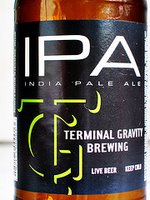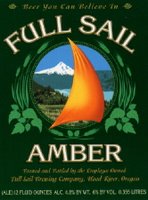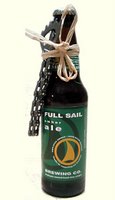Deschutes first released Black Butte Porter in 1988, and although it is one of the rare breweries to have actually achieved brand recognition beyond a single product, this tasty porter could be considered the flagship.
Legend already surrounds it.
 In the late 80s, after identifying Bend, restauranteur Gary Fish decided he would open a brewpub. His search for a brewer led him to John Harris, who had helped the McMenamins begin their journey (and is the father of, I believe, Hammerhead). Fish made an early decision he has stuck with throughout the past 18 years to give his carte blanche in the brewhouse. This might have backfired with a different brewer, but Harris was allowed to craft a batch of beers that have become standards of their styles: Obsidian Stout, Mirror Pond Pale, and Bachelor Bitter.
In the late 80s, after identifying Bend, restauranteur Gary Fish decided he would open a brewpub. His search for a brewer led him to John Harris, who had helped the McMenamins begin their journey (and is the father of, I believe, Hammerhead). Fish made an early decision he has stuck with throughout the past 18 years to give his carte blanche in the brewhouse. This might have backfired with a different brewer, but Harris was allowed to craft a batch of beers that have become standards of their styles: Obsidian Stout, Mirror Pond Pale, and Bachelor Bitter.When Deschutes entered the bottled beer market five years later, a curious phenomenon gripped breweries. While the market was exploding with myriad beers of myriad styles, the best sellers were "crossover" beers that sold well with newbies: Widmer Hefeweizen, Saxer Lemon Lager, Portland Brewing's Honey Ale. For the period of time between Black Butte's entry into the bottle market until about 1998, most breweries invested heavily in light, unagressive beers. But not Deschutes. They boldly continued along with their line of uncompromising ales.
As the market began to shake out, the crossover beers lost market share to the more characterful ales produced by other breweries, and many companies didn't survive. Deschutes, which has never put out a beer that was a PR concoction (you'd be surprised how rare that is), has been the only brewery in the state to see steady growth as the market fluctuated. They did it, in no small measure, because Black Butte is a great beer.
Tasting Notes
Porters came to be in 1722 (or'30--sources vary) when London brewer Ralph Harwood introduced a mixture of three beers common at the time. He called the resulting brew "entire" or "entire butt" (butt being an olden days word for "barrel"). Porters from the nearby produce market are purported to have liked it, hence the name. (Jackson disputes this.) As for names, I wonder if Deschutes' decision to name their porter after Central Oregon's Black Butte wasn't a nod to Harwood's "entire butt." Someday I'll ask someone.
The beer appears black in the glass, with a fluffy tan head. However, if you hold it to a light, you can see that it's a very dark amber--and quite bright, with not a hint of cloudiness. The aroma has parts chocolate and parts London pub--don't ask me what that means, I just know it when I stick my nose in a Fuller's or Young's.
It's not surprising that Black Butte emerged from the "crossover beer" days. It is in many ways the perfect crossover itself. The first note is a chocolatey sweetness, supported by a creamy mouthfeel. It isn't a heavy beer, but substantial enough to sate hearty-beer fans. There's a bit of coffee in the final note which, despite the sweetness, makes for a dry finish.
It is as near a universal beer as I know and I have yet to encounter a beer drinker who doesn't like it. And even a few who "don't like beer" like Black Butte.
Statistics
Malts: Pale, crystal, chocolate
Hops: NA
Alcohol by volume: 5.2%
Original Gravity: 1.056
Bitterness Units: 30
Available: Throughout the Northwest
Rating
A Northwest classic.





